( English version at the bottom of the page )
Deuxième version de cet avion avec maintenant un poste de pilotage complet .
l'Amérique et la France ne considèrent pas sérieusement l'aéronautique de combat VTOL . L'angleterre par contre s'y interessa trés tôt .
Impressionné et inspiré par la performance du British Short SC , l'avion de recherche VTOL , Les russes lancèrent le programme Soviet VTOL .
Le responsable de la défense , Dmitri Ustinov, a commandé le programme de recherche Soviet VTOL .
Cet avion a été équipé d'un moteur fixe monté verticalement , de buses rotatives et d'un fuselage conventionnel .
La base utilisé était le Yak 30 , nommé Yak-30 V pour (vertikalnyi , vertical) , avant d'être renuméroté Yak-36 .
En 1961 se sont déroulés les premier essai de vol du Hawker P. 1127 , protoype de recherche , qui aboutira au Harrier .
Quatre avions de recherche Yak-36 ont été construits , en comptant la cellule de test statique .
Le premier spécimen de vol a été achevé en 1962 et ses premiers tests en vol stationnaire ont été fait, attaché au sol .
Le 24 Mars 1966 , un décollage vertical avec une transition complète , un vol horizontal , puis retour avec vol stationnaire et un atterrissage vertical a été achevé .
Ces prototypes ont donné beaucoup de expérience dans la conception de VTOL .
Ces avions ont affiché des mauvaises performances : leur plafond n'était que d'environ (39 370 pieds) et l'autonomie restait faible .
De plus , le pilotage restait complexe , notamment pendant les phases de transitions de vol .
Quelques brefs essais du Yak-36 ont été fait à bord du croiseur hélicoptère Moskva .
Un exemplaire a participé en Juillet 1967 à la parade aérienne de Domodedovo . Cela a révélé au public
l'existence de cet appareil . Peu de temps après , le Yak-36M et Yak-38 a reçu d'Occident le nom de code Freehand .
Cellule modifiée , poste de pilotage complet , domaine de vol modifié .
Pour un vol plus fluide et un pilotage plus facile , les volets sont couplés à l'orientation des réacteurs .
Correction trim pendant le vol avec l'orientation des réacteurs ( Touche VTOL ) .
Décollage vertical : réacteurs orientés vers le bas ( VTOl bas ) , puissance à environ 30% , contrôler avec pitch jusqu'a environ 500 ft , orienter les
réacteurs horizontalement ( VTOL milieu ) et augmenter le puissance jusqu'à 100% .
Atterrissage : approche réacteur 30% , aérofrein sorti , réduire la vitesse à 50 mph , contrôler l'inclinaison de l'avion avec les réacteurs ( VTOl ) .
Réduire la vitesse horizontale à 10 Mph et contrôler la descente avec les gaz .
Réacteur : touche 1 .
Feux de navigation : touche 2 .
Feux d'atterrissage : touche 3 .
Verrouillage train avant : touche 7 .
Fermeture et ouverture cockpit : touche 8 .
Orientation tuyères : vtol .
Aérofreins : touche 6 + Trim bas .
Réglage trim : touche vtol ( contrôle de l'inclinaison de l'avion avec l'inclinaison des réacteurs ) .
Une version UTI est en préparation .
English Version :
Second version of this aircraft now with a complete cockpit.
America and France do not seriously consider VTOL combat aeronautics. England, on the other hand, took an interest in it very early on.
Impressed and inspired by the performance of the British Short SC, the VTOL research aircraft, the Russians launched the Soviet VTOL program.
Defense official Dmitry Ustinov commanded the Soviet VTOL research program.
This aircraft was fitted with a vertically mounted fixed engine, rotating nozzles and a conventional fuselage.
The base used was the Yak 30, named Yak-30 V for (vertikalnyi, vertical), before being renumbered Yak-36.
In 1961, the first flight tests of the Hawker P. 1127, a research prototype, took place, which would lead to the Harrier.
Four Yak-36 research aircraft were built, including the static test cell.
The first flying specimen was completed in 1962 and its first hover tests were made, tethered to the ground.
On March 24, 1966, a vertical takeoff with a full transition, horizontal flight, then return with hover and vertical landing was completed.
These prototypes provided much experience in VTOL design.
These planes performed poorly: their ceiling was only around (39,370 feet) and the autonomy remained low.
In addition, piloting remained complex, particularly during flight transition phases.
Some brief tests of the Yak-36 were made aboard the helicopter cruiser Moskva.
One example participated in the Domodedovo air parade in July 1967. This revealed to the public
the existence of this device. Shortly thereafter, the Yak-36M and Yak-38 received the code name Freehand from the West.
Modified airframe, complete cockpit, modified flight envelope.
For a smoother flight and easier piloting, the flaps are coupled to the orientation of the engines.
Trim correction during flight with engine orientation (VTOL button).
Vertical takeoff: engines oriented downwards (low VTOl), power at around 30%, control with pitch up to around 500 ft, direct the
reactors horizontally (VTOL middle) and increase the power up to 100%.
Landing: 30% engine approach, airbrake extended, reduce speed to 50 mph, control the plane's inclination with the engines (VTOl).
Reduce the horizontal speed to 10 mph and control the descent with the throttle.
Reactor: key 1.
Navigation lights: button 2.
Landing lights: key 3.
Front axle lock: button 7.
Closing and opening cockpit: button 8.
Nozzle orientation: vtol.
Airbrakes: button 6 + Trim down.
Trim adjustment: vtol button (control of the inclination of the plane with the inclination of the engines)
A UTI version is in preparation.
Specifications
Spotlights
- Suubk27 10 months ago
- Apollo018362 10 months ago
General Characteristics
- Predecessor Yak-36 VTOL prototype 2
- Created On Windows
- Wingspan 41.8ft (12.8m)
- Length 41.0ft (12.5m)
- Height 13.1ft (4.0m)
- Empty Weight 8,487lbs (3,849kg)
- Loaded Weight 12,034lbs (5,458kg)
Performance
- Power/Weight Ratio 5.602
- Wing Loading 50.2lbs/ft2 (245.3kg/m2)
- Wing Area 239.5ft2 (22.3m2)
- Drag Points 5392
Parts
- Number of Parts 217
- Control Surfaces 7
- Performance Cost 995

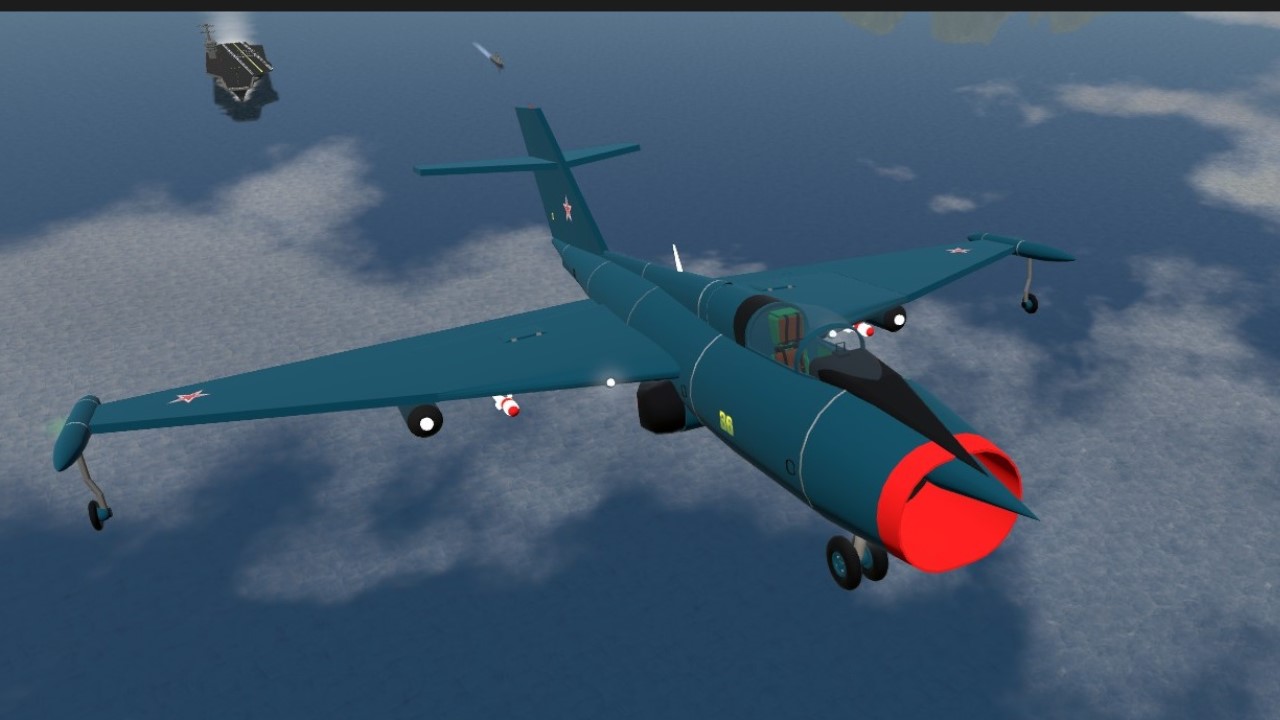


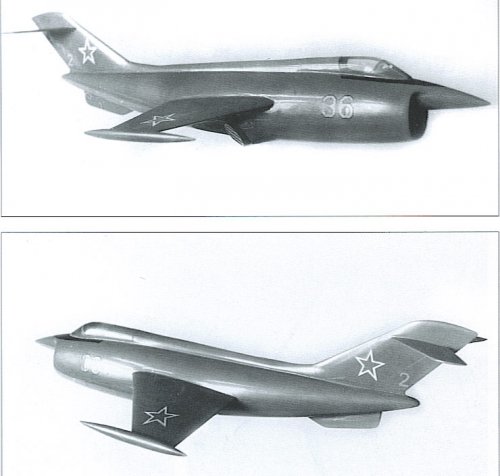
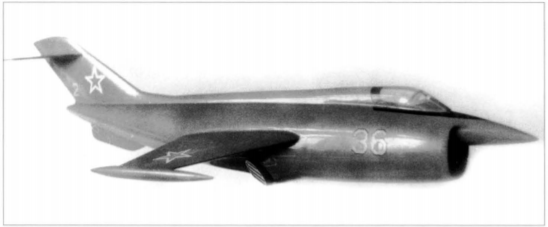
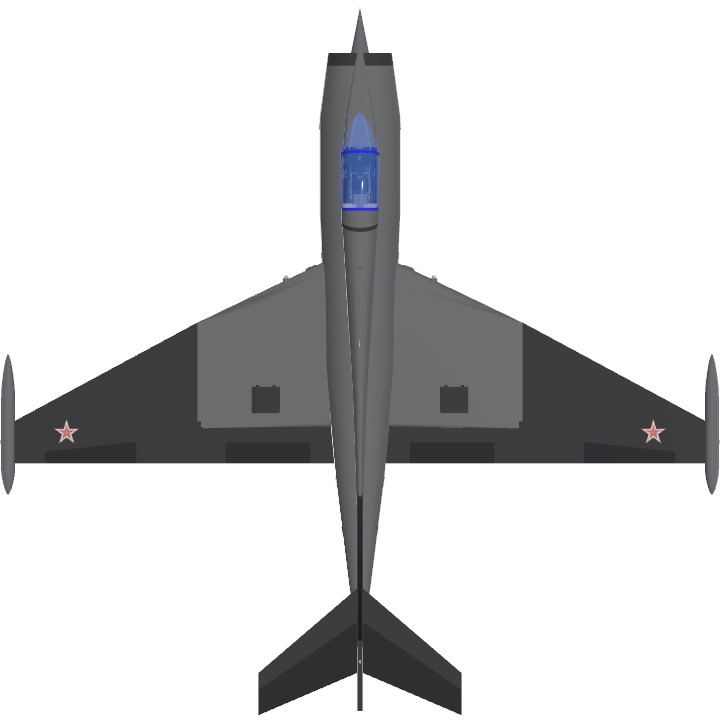

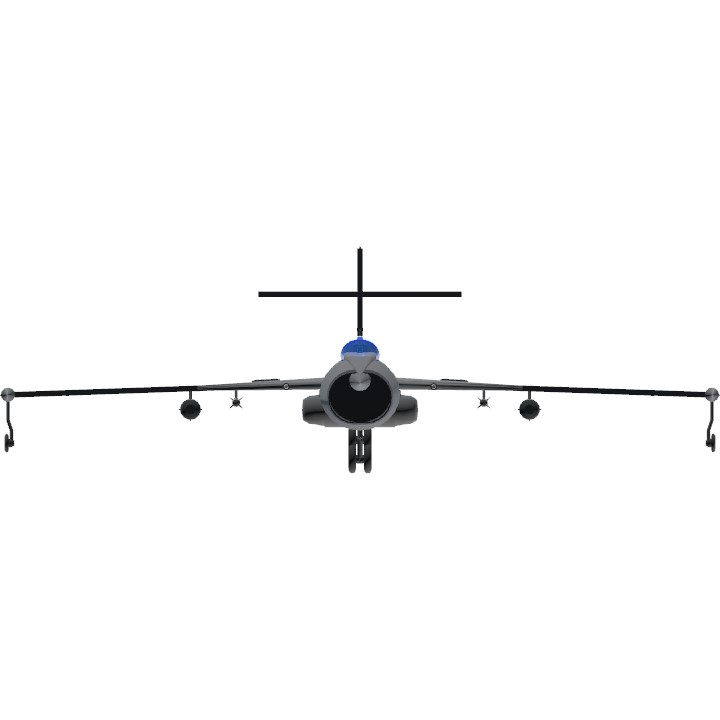
@XEPOH , Thanks for your upvote .
@UseGooglePlay , thank for your upvote .
@STALIN83 , thank for your upvote bro .
Nice plane👍🏻👍🏻
@Vikram123 , thank for your upvote .
@Trainzo np👍
@dINE , thank for your upvote .
@Apollo018362 , Thanks again , a UTI version is coming soon. I think you will be surprised.
@Suubk27 , thankfor your upvote and for have spotlight my plane .
@Vitto191, @ZerkkOtakuGuy , @kErc90F4RU , thanks for yours upvotes .
@Trainzo. You're welcome! I love your planes ^^
@Shimamurahougetsu , @Superliner350 , thanks for yours upvotes .
@Omoriboy ,@TheMouse , @NINJ4 , thanks for yours upvotes .
@Apollo018362 , thank for your upvote and for have spotlight my plane .
This is a weird looking plane, nice job building it!